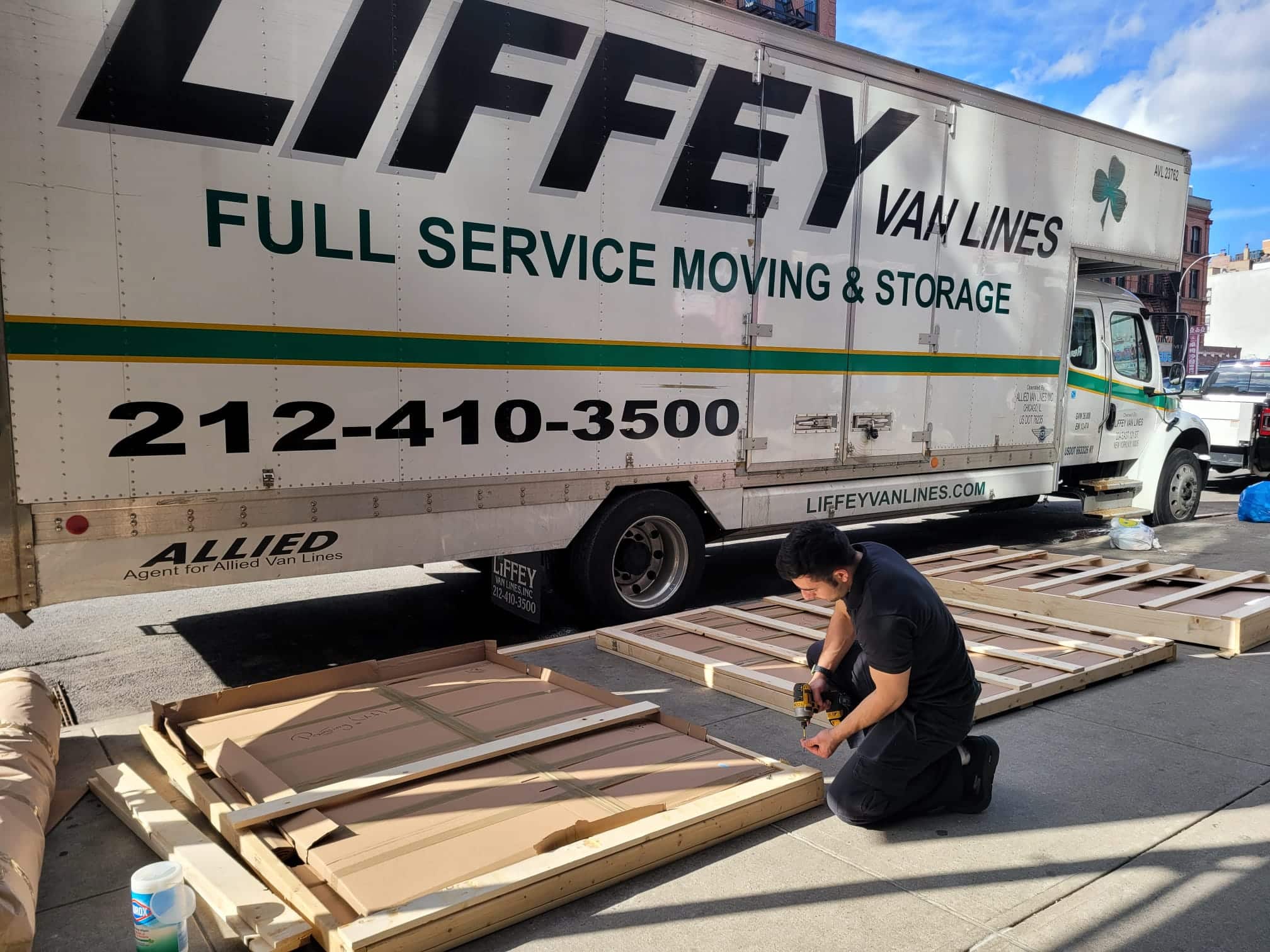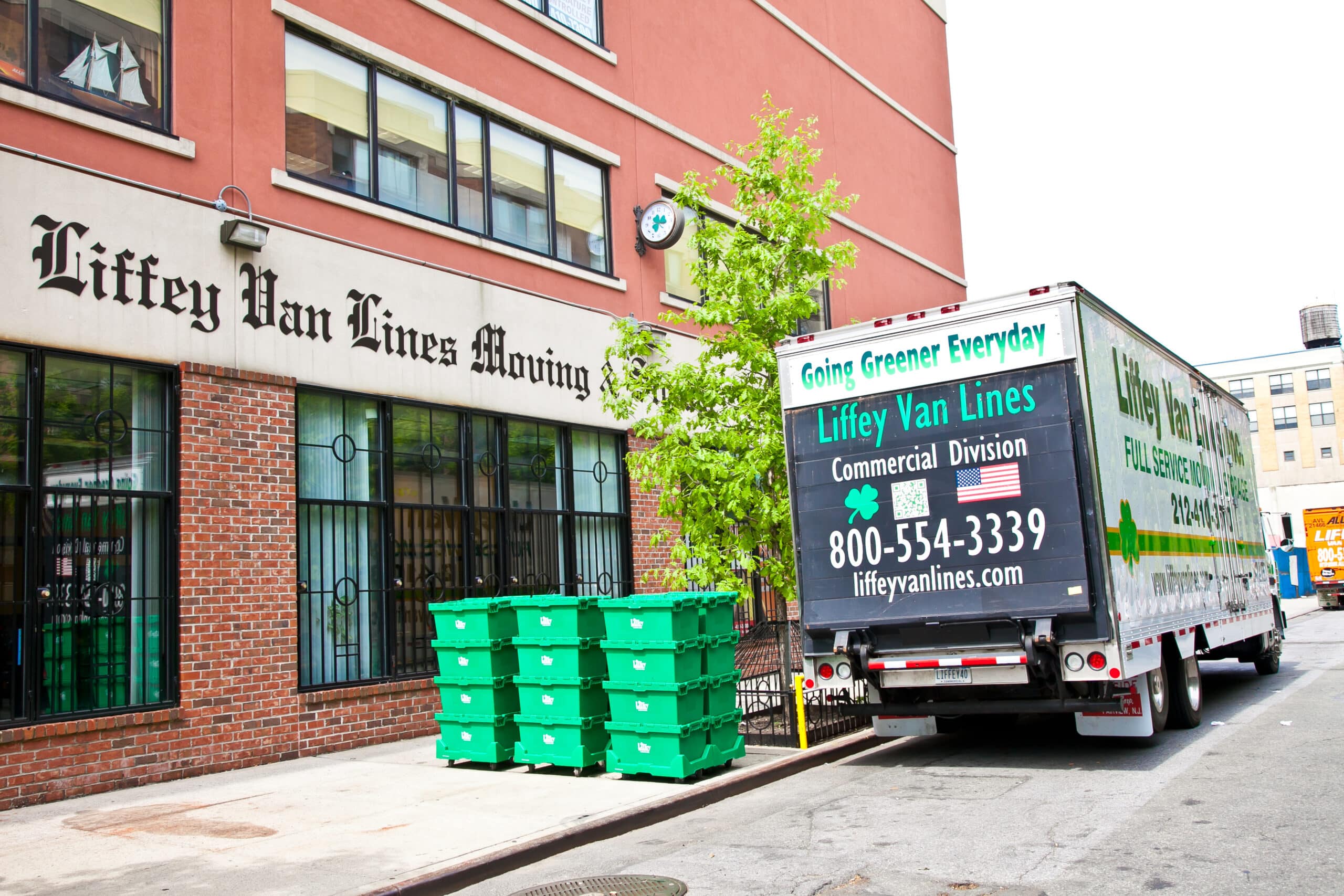Table of Contents
It’s 6 a.m. on move day in Manhattan and you’ve just learned your co-op elevator reservation was mistakenly given away. In a city where timing is everything, these last-minute surprises can derail even the most prepared New Yorker. This Manhattan moving guide is your expert resource for navigating every essential—permits, timing, costs, and logistics—before, during, and after your move.
Quick Answer: To move within Manhattan smoothly, secure parking permits 48 hours early, request your building’s Certificate of Insurance (COI) at least one week out, and schedule elevator reservations 2–3 weeks in advance.
Whether you’re relocating from the Upper West Side to Chelsea or downsizing in Midtown, understanding these building and city-specific logistics ensures a seamless experience. Liffey Van Lines’ decades of NYC moving expertise make this guide both a checklist and a roadmap for your Manhattan relocation.
Get a free quote before planning your next move.
Manhattan apartment buildings each have unique move-in and move-out requirements. Most residential towers and co-ops require a Certificate of Insurance (COI) from licensed movers to protect property and residents. Many buildings—particularly those in Midtown and the Upper East Side—won’t even allow movers onsite without it.
Common requirements include:
According to the NYC Department of Buildings, management companies can impose move restrictions, fees, or blackout dates. Always confirm your building’s moving rules at least two weeks in advance.
Pro Tip: Liffey Moving handles all COI paperwork directly with building management, ensuring you’re cleared for move-in without delays.

Securing a temporary parking permit for a moving truck in Manhattan is crucial. Parking violations can add over $200 in fines if ignored, and parking without a permit can stall the entire process.
According to the NYC Department of Transportation, permits should be filed online at least 48 hours before your move. In neighborhoods like SoHo and the Financial District, where curb access is restricted, it’s vital to plan alternative loading zones early.
Best practices for Manhattan moving permits:
1. Apply at least 2 business days before your move.
2. Post temporary “No Parking” signs 24 hours ahead.
3. Use side streets during non-peak traffic hours.
4. Confirm with your building if curb loading zones exist.
Pro Tip: When you book with Liffey, our team coordinates truck permits along with your COI—all part of the guaranteed flat-rate service.

As you explore this Manhattan moving guide, cost transparency matters most. Apartment sizes and building configurations directly influence pricing. Here’s a general cost overview:
| Apartment Type | Average Cost | Peak Season (May–Sept) | Off-Peak (Jan–Mar) |
|---|---|---|---|
| Studio | $800–$1,200 | +15% premium | –10% savings |
| 1 Bedroom | $1,200–$1,700 | +20% | –15% |
| 2 Bedroom | $1,800–$2,800 | +25% | –10% |
| 3 Bedroom | $2,800–$4,000+ | +30% | –15% |
Based on Liffey Moving estimates with guaranteed flat-rate pricing.
Hidden fees to avoid:
Pro Tip: Liffey’s local New York moving services guarantee no hidden fees—just transparent rates and scheduling flexibility during busy months.

Timing is everything in Manhattan. Peak moving season runs from May through September, driven by lease renewals and university schedules. During this period, movers and elevators are booked weeks in advance.
Choosing an off-season or weekday move can dramatically lower costs and improve availability. Winter moves provide shorter travel times, while spring transitions often offer discounted rates with professional movers.
Ideal booking timeline:
Pro Tip: Off-season moves can save up to 20%. Get an early storage quote if your moving dates don’t align perfectly.
A defining feature of the Manhattan moving guide is understanding how architecture impacts your plan. Pre-war walk-ups in Greenwich Village or East Village mean narrow staircases and no elevators. High-rises in Midtown boast freight elevators but enforce time-sensitive slots.
Key differences:
Pro Tip: Our furniture moving experts are trained for narrow hallways and 5-story walk-ups—no space is too tight.
Use this quick 5-step breakdown to follow the best Manhattan moving guide strategy:
1. Research & Request Quotes: Compare reputable NYC movers early.
2. Confirm Building Policies: Secure COI and elevator window.
3. Schedule Permits & Parking: Apply 48 hours prior with NYC DOT.
4. Pack & Label: Use clear room tags; disassemble bulky furniture early.
5. Move & Verify: Meet building staff upon arrival; inspect truck unloading.
Pro Tip: With Allied partnership support, Liffey offers GPS tracking for long-distance relocations from Manhattan to nationwide destinations.
Plan at least 3–4 weeks ahead, especially from May to September. Early booking ensures access to elevators and affordable pricing.
Yes, nearly every managed building requires a Certificate of Insurance from your movers. Liffey handles this documentation for all clients.
Weekdays between October and March offer lower prices and better building flexibility.
Expect local movers to quote $1,200–$1,700, depending on floor level, location, and building restrictions.
Most licensed movers, including Liffey Moving, handle NYC parking permits as part of a full-service relocation.
Liffey’s office team coordinates directly with property managers to adjust schedules or add manpower for stair moves when necessary.
Choosing movers with Manhattan-specific experience saves money, time, and stress. Keep these reminders from our Manhattan moving guide:
For more than 45 years, Liffey Van Lines has been Manhattan’s trusted relocation expert and the city’s exclusive Allied agent. Get your guaranteed flat-rate moving estimate today—call (212) 410-3500 or request a quote online.


